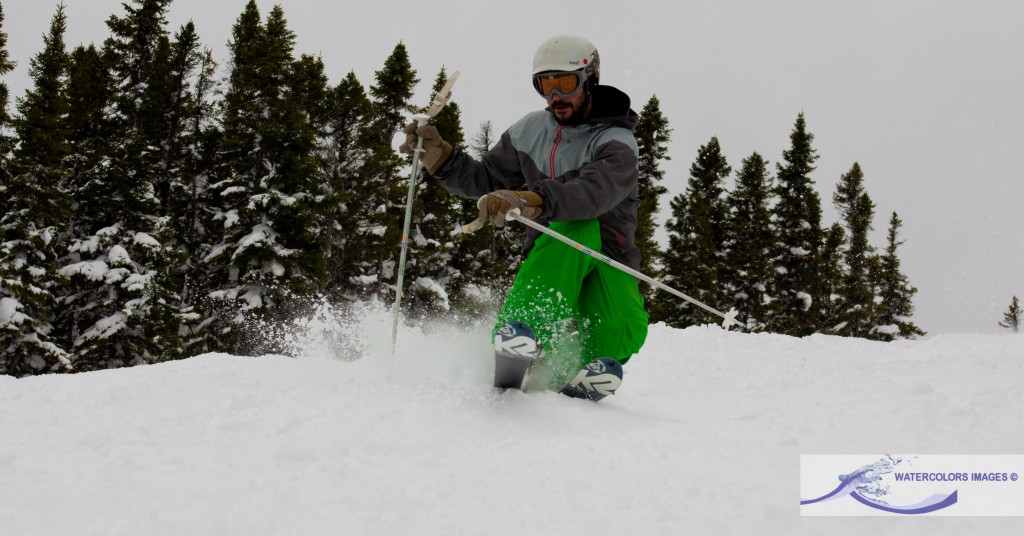The telemark stance define the sport. This split squat creates the turn and stabilize the skier.
A lot of the modern telemark technique and equipment is influence by the alpine ski technique. Balance and weight distribution are no exceptions.
How much weight should you put on your back ski?
It use to be really clear: 50% on each skis. At all time. When parabolic skis came on the market, that’s what the alpine world did too. Get both skis to carve is more efficient. For the past few years, alpine has come back to 80% on the outside ski. They say that it reduces the chance of falling on the inside ski. And people are winning world cup with that technique.
What about telemark weight distribution?
Does the same precept apply? For the carving/racing world, yes. Telemark racers have followed the alpine ski technique. I was talking to Stephane Perreault, Quebec provincial telemark team head coach, he thinks that the telemark stance should always be 80% on the front leg, centering the hips and the foot in one line. Here is what Stephane means:

peter 2009 nationals http://www.ustsa.org/new-site/images/stories/US_Team_Photos/peter%202009%20nationals%20-web.jpg
Here’s a racer in different postures. Before and after the gate. This is 80% on the outside ski.
For my part, I don’t agree with Stephane, unless you are carving and racing, which, in my mind is not everybody’s cup of tea.
50-50 stance for all terrain, mogul, and powder telemark
Obviously, telemark is a challenge for balance. Unequal terrain and snow makes the technique more challenging. The advanced technology in boots and binding has made it easier, but it’s still a challenge. 50% of the body weight on each ski is not entirely right. I’d say weight transfer from the outside ski (front ski) at the beginning of the turn to reach 55-70% to rapidly shift to 50% as you cross the fall line. Why 55 to 70% on the front ski? It depends on the snow, speed, terrain… In deep snow, or wet powder you want to keep a great platform with both skis and have just a bit more weight (55%) on the front ski. On easier terrain or going faster, longer turns, you can boost your weight transfer to the front ski (70%) to get a stronger edge hold. The more you put weight on your front leg though, the more expose you become to loosing your balance forward. And compared with alpine skiing, no telemark binding will prevent you from falling forward if it happens.
To recap, their is no right or wrong way weight distribution. Telemark skiing is about being able to adapt to any situation. Here’s a series of pictures of my good friend Alexis clearly having a lot of weight on his back ski. But he is still centered. And he is by far the fastest telemark skier in moguls I have ever seen, by far.
Fast and in control in moguls… Not many telemark skiers can claim to master that. Alex is often really low and keep a compact stance.
Here’s a short video mogul telemarking
What are your thoughts on weight distribution ? Centered, front leg, back leg? what is your approach in different situation? Add your voice below.
AND don’t forget to subscribe to our email updates.
Join Absolute Telemark













